Corinne Strazzieri
Your artistic journey began as a self-taught artist. What drew you to mosaic art, and what made you decide to explore it outside of academic traditions?
Yes, my path has indeed been that of a self-taught artist. I’ve always been very hands-on and taught myself all kinds of techniques (knitting, patchwork, embroidery, etc.).
I discovered mosaic somewhat by chance, without trying to follow an academic path. What immediately fascinated me was the material, the gesture, the light that emerges from the fragments. There’s something deeply human in this art: bringing together what is broken to restore unity and meaning.
I love the idea that beauty can arise from the fragment—that each piece, even if imperfect, carries a story and finds its place within a whole. Working independently has allowed me to explore freely, to cross mosaic with other fields, and to make it more contemporary, more instinctive.
Not having undergone traditional training has given me a precious freedom: to learn by experimenting, to listen to my intuition, and to let the material guide me. It is this living, sensory relationship with mosaic that continues to nourish my passion every day.
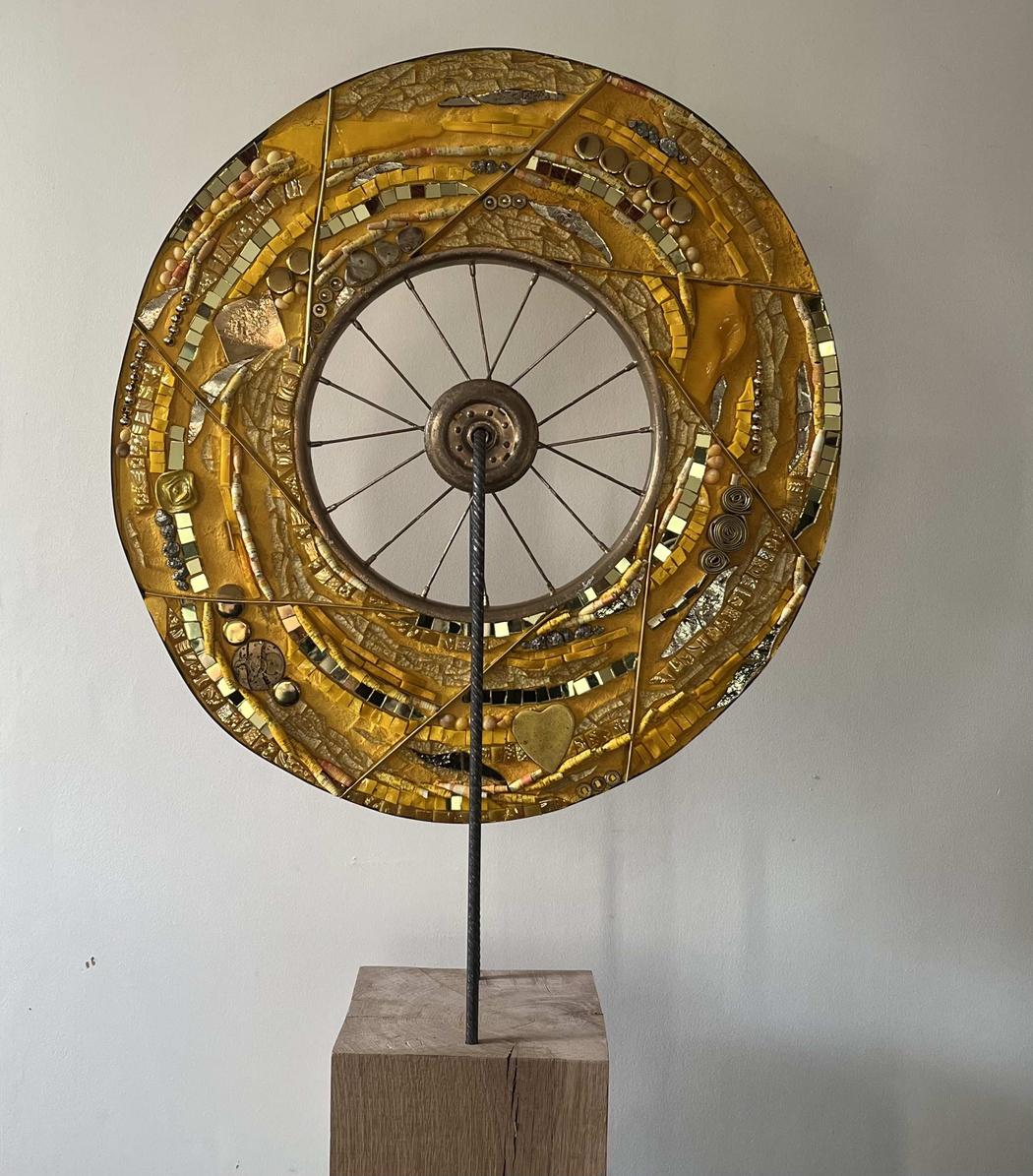 Corinne Strazzieri | Rayons De Soleil | 2025
Corinne Strazzieri | Rayons De Soleil | 2025
Your pieces seem to balance structure and emotion — how do you find harmony between geometry, texture, and spontaneity in your creative process?
The balance between structure and emotion is at the heart of my work. Structure is my anchor— a breathing space that allows me to build. But very quickly, the material takes over: I listen to it and let it carry me elsewhere.
Geometry draws me for its rigor, yet I like to unsettle it—step outside the frame, introduce an irregularity, an unexpected spark, an imbalance. That’s where spontaneity enters and emotion emerges.
For me, harmony is born from this tension between control and letting go. Each piece is a meeting between the precision of the gesture and the freedom of feeling. What I seek is to make the material vibrate, to bring it to life, so that it speaks both to the eye and to the viewer’s inner sensibility.
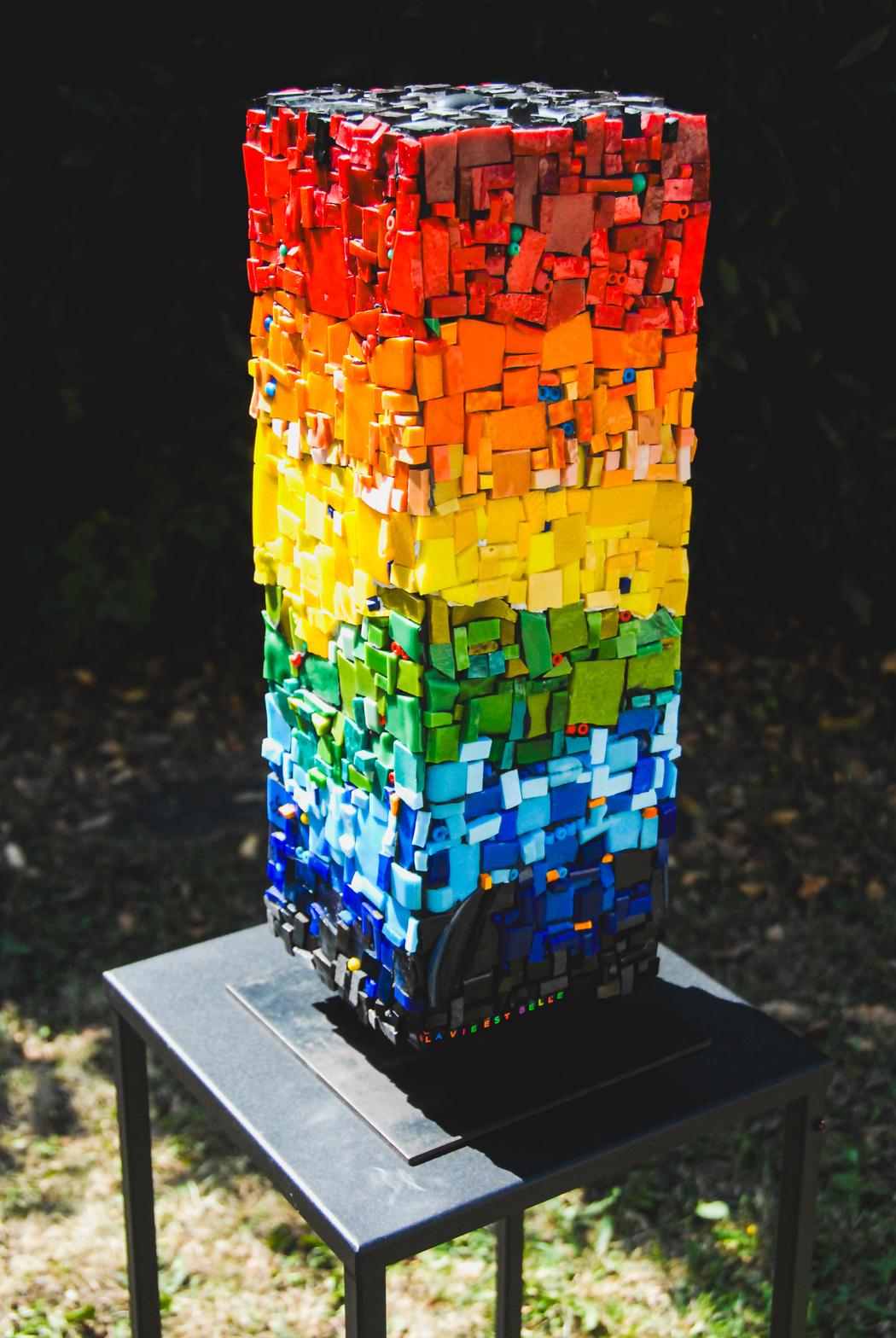 Corinne Strazzieri | La Vie Est Belle | 2023
Corinne Strazzieri | La Vie Est Belle | 2023
Many of your works feature circular and heart-shaped compositions. What symbolic meaning do these forms hold for you?
These forms recur in my work, almost instinctively. The circle and the heart are, for me, universal symbols: the circle evokes unity, continuous movement, life in perpetual transformation. It is soothing, almost meditative.
The heart speaks of emotion, connection, human warmth. It isn’t a decorative motif, but a language. When I create a heart, I’m expressing a feeling, an energy, a breath.
These forms often arise from an instinctive impulse, not a deliberate decision. They emerge when I’m in a state of listening, when the material speaks to me. I believe they reflect my need for connection, for balance, and perhaps also for gentleness in a world that sometimes lacks it.
There is a strong sense of movement and energy in your mosaics — what inspires this dynamic quality?
Movement is an integral part of my practice—and above all, of my temperament. I am always in motion, full of ideas and projects that carry me forward and help me grow. In my work, I perceive mosaic as a living material, in constant vibration. Each fragment participates in this flow. I’m not seeking to freeze an image, but to capture an energy, a breath.
The rhythm of the gesture and the way light moves between the tesserae create this impression of life. It’s a language made of shards and silences, a way of telling a sensitive story in which each person can see what they wish, according to their mood and desire.
This dynamism also comes from my relationship with nature—its cycles and metamorphoses. To create is to be in connection with the living world around us. What I would like to convey is what animates me every day: that vitality, that joy of living that circulates through the material and the colors, like a luminous breath.
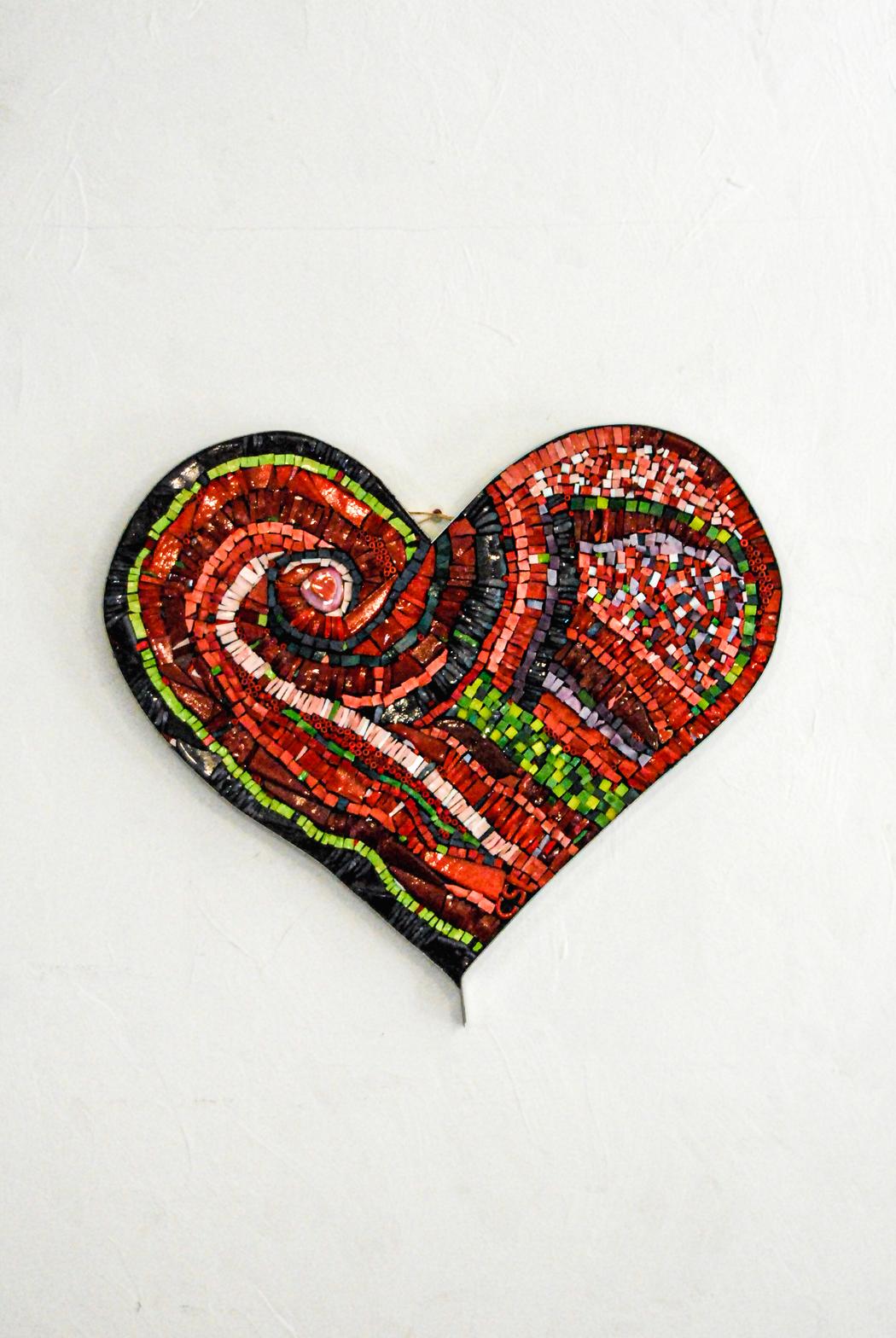 Corinne Strazzieri | Funny Love | 2024
Corinne Strazzieri | Funny Love | 2024
In your biography, you mention transforming everyday life into poetry. Could you share an example of a simple object or moment that inspired a piece?
Yes, I deeply love this idea of transforming the everyday into poetry. The most sincere emotions often arise from what seems insignificant. A detail, a light, a fragment of life can become the starting point for a work.
I’m thinking of a series inspired by objects kept in my studio, like a rusty tool that belonged to my father. Behind this ordinary object was the memory of a gesture, an emotion from childhood. From that trace I created a mosaic, seeking to capture the passage of time and the tenderness of memory. I even titled it “Fragments of Life.”
Often, an object picked up on a walk—a shard of glass, the softness of a gesture—becomes raw material for creation. Mosaic art helps me reveal the hidden beauty in these simple moments, transforming the ordinary into a visual poem.
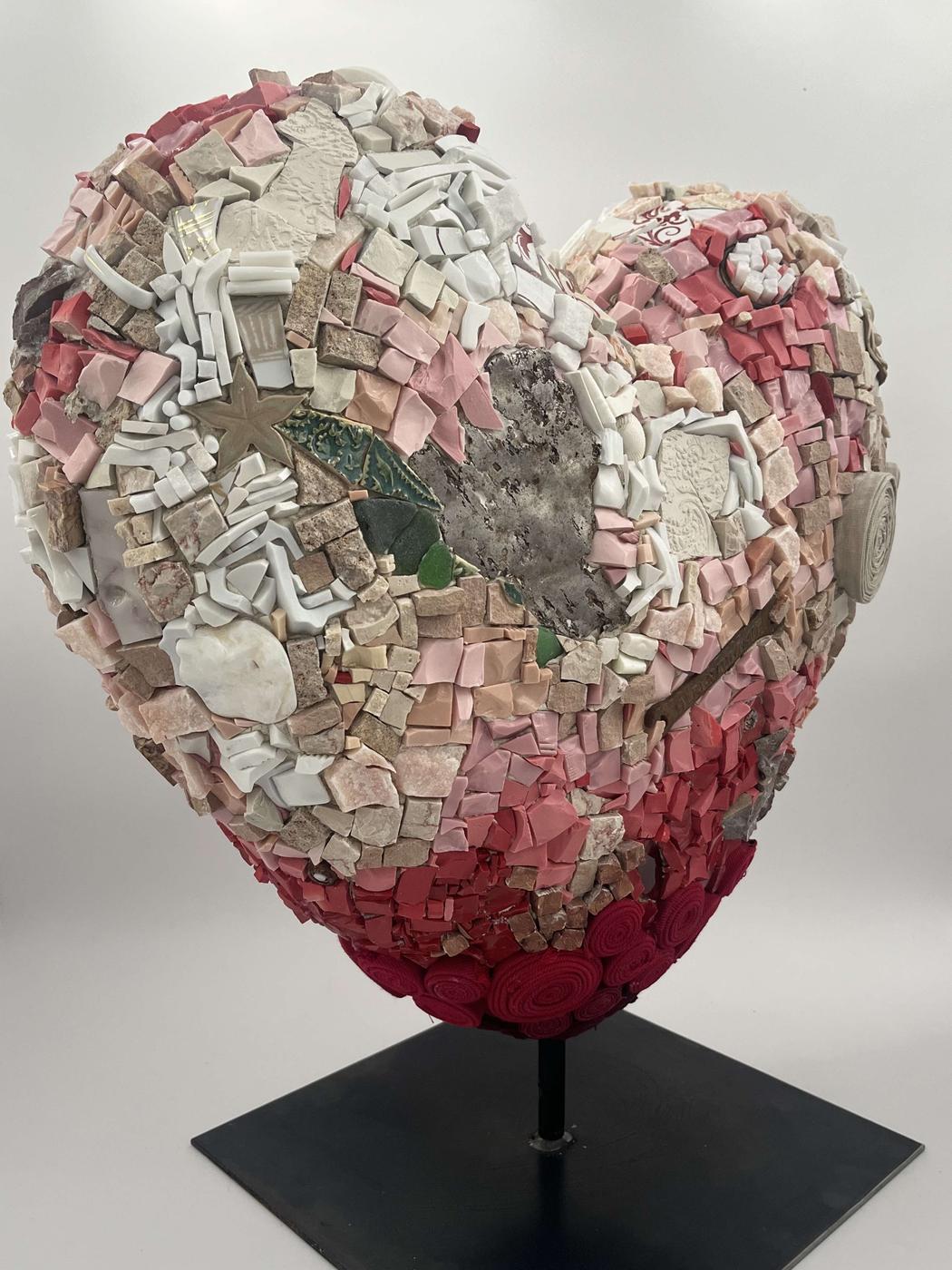 Corinne Strazzieri | Fragments De Vie | 2024
Corinne Strazzieri | Fragments De Vie | 2024
How do you see the role of light in your works, especially in the reflective materials you use?
Light is the guiding thread of all my work. It is not just a visual effect, but a living substance. When I compose, I think about how it will inhabit the piece, move through it, reflect, and change over the course of the day.
Mosaic has this magic: it captures, transforms, and diffuses light. Thanks to glass, mirrors, or metallic fragments, each work enters into dialogue with its environment. Nothing is ever fixed: a piece can seem gentle in the morning and vibrant at dusk.
Light connects the visible and the invisible; it breathes emotional energy into matter. When it catches on a tessera, I always feel as if it awakens its soul.
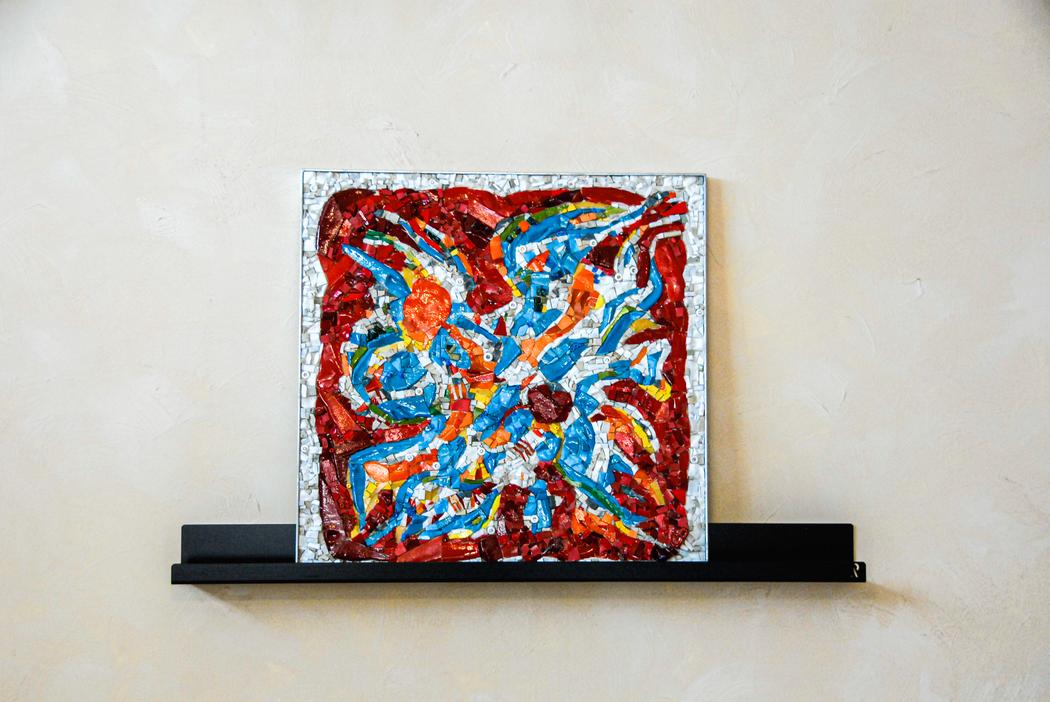 Corinne Strazzieri | Eclats De Joie | 2024
Corinne Strazzieri | Eclats De Joie | 2024
As a juror and mentor for other mosaic artists, what advice do you give to those who are just beginning to explore this art form?
I don’t see myself as a mentor, but rather as a companion—especially in the art-therapy courses and workshops I lead.
I tell them first and foremost to enjoy themselves, to listen to the material, and to stay curious. Mosaic is a unique language—one of slowness and precision, but also improvisation and freedom. Each fragment carries its own light, texture, and history. I encourage them to dare to step off the beaten path, to mix materials, to experiment. Contemporary mosaic is an endless field of exploration where color, light, volume, recycling, memory, and emotions intersect.
Finally, I remind them that it is a profoundly living art. It connects gesture to material, the past to the present. In this space of balance, true creative freedom is born—the kind that makes each person’s joy and sensitivity resonate. And we all have a creative spirit, more or less hidden within us. I’m here to help bring it forth.

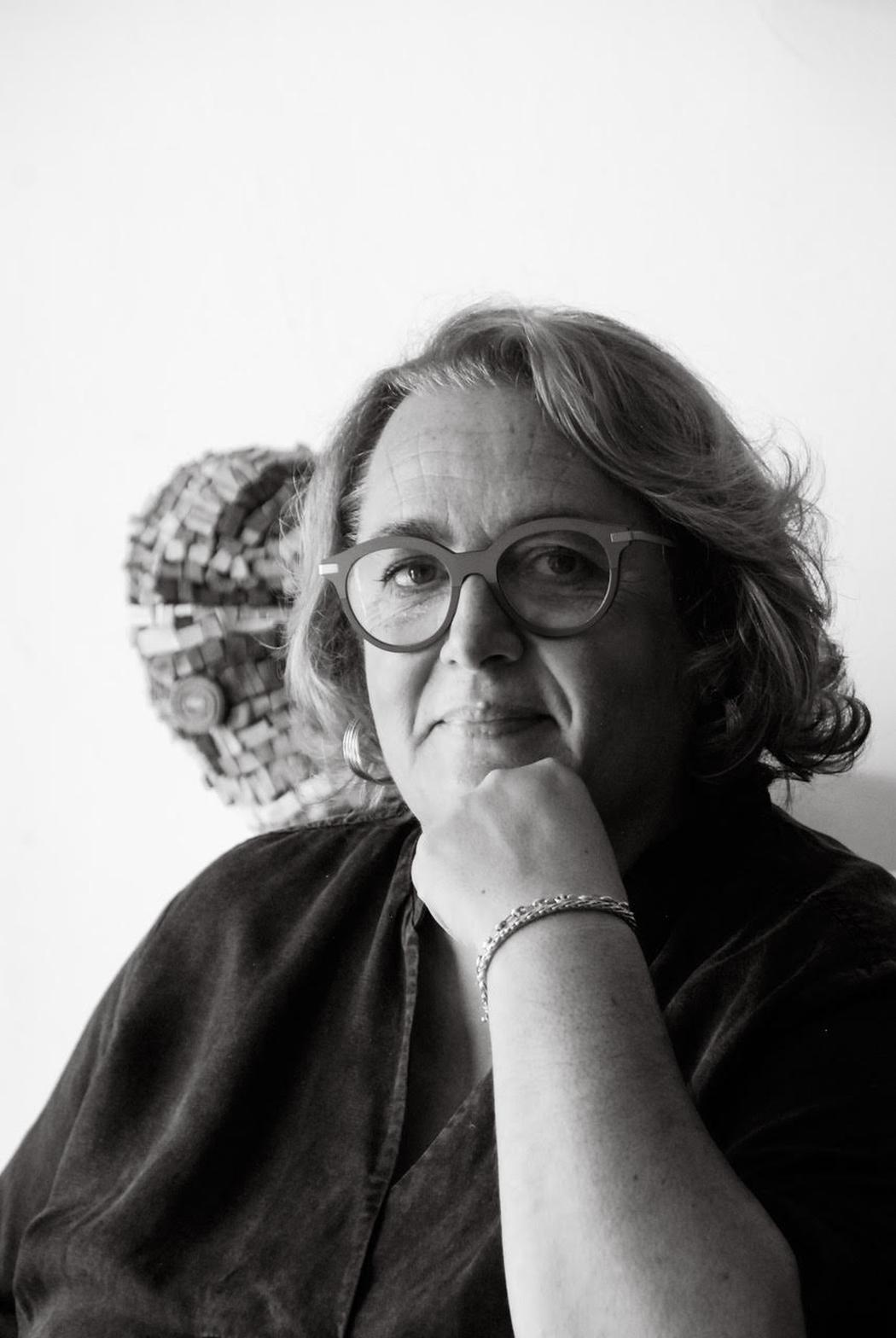
Leave a Reply